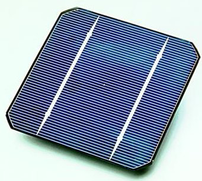< !–google_ad_section_start—>
Author: Anna
Every day, households around the world are using up the planet’s resources for energy. If this continues, these energy sources will be depleted quickly -unless alternative renewable energy sources are utilized.
One of the energy sources that modern technology has recently put to good use is solar energy. Solar energy isn’t anything new, but new technology advancements have placed solar power more into the mainstream, and it may one day be one of our primary sources of power. –
Advantages of Solar Energy
Since solar energy comes directly from the sun, it is not only renewable, but also accessible in any part of the world. As long as the proper equipment is utilized, unlimited amounts of solar power can be collected and put to good use.
Solar power is also one of the cleanest forms of energy, since it creates no pollution, and produces no greenhouse gases or waste products. For residential uses, the use of solar power minimizes negative impacts on the surrounding environment, making it a safer alternative to wind or hydro power.
Not only is solar energy non-pollutant, in terms of gases, but it also causes zero noise pollution – since there are no moving parts in any of the devices which are used to capture the sunlight. Due to the fact that no moving parts are used, maintenance costs are low as well – only occasional cleaning and periodic battery replacements are needed. Most manufacturers of solar panels provide twenty-year warranties for their equipment, guaranteeing long-life operation.
Solar panels placed on rooftops also double as a heat absorbers, slightly cooling the top area of the house which is directly below the roof.
Disadvantages of Solar Energy
The most obvious drawback of solar energy is its sole dependence on the sun. Once the weather becomes cloudy, or night strikes, energy collection comes to a halt. However, recent advancements of technology now allow the generated power to be stored in special batteries which provide roughly enough electricity to last a night.
This is why solar-powered devices, including flashlights, are gaining in popularity and are proving to be efficient energy savers. Solar panels can also be expensive, because of the materials that are used to create them. And even when these materials are taken out of the equation, the entire process, considering the other devices involved, can be a bit costly. This includes portable devices that utilize solar energy. But most of the cost involved is in the initial purchase and installation of a solar power system – not running costs.
Fortunately, there are some people who sell damaged solar cells, which are much cheaper. These damaged solar cells can be used to build fully functional solar panels, using the application of simple do-it-yourself techniques. Although in every part of the world, there is at least some point in time when the sun shines, it is also true that direct sunlight is needed in order to make the most of the sun’s energy – and to generate the highest amounts of power. This significantly restricts the placement of solar panels. And some areas in the world may receive little benefit, due to lesser sunlight.
What’s the Bottom Line?
More research and development continues to be invested into this growing technology, and that’s a good sign for the future of our households – as solar power may one day be used more frequently than other energy sources. Of course, solar energy isn’t perfect, but it makes a great complimentary addition to other energy forms.
Article Source: http://www.articlesbase.com/technology-articles/pros-cons-of-solar-energy-812630.html
About the Author:
To learn more about how solar energy can be used as part of modern clean energy solutions, for the home and on the road, please visit the author’s website on Solar Power, as well as her Solar Power Blog.
![Reblog this post [with Zemanta]](http://img.zemanta.com/reblog_c.png?x-id=612866f3-0a89-4c69-9687-b9abcc4f08c3)
< !–google_ad_section_end—>


